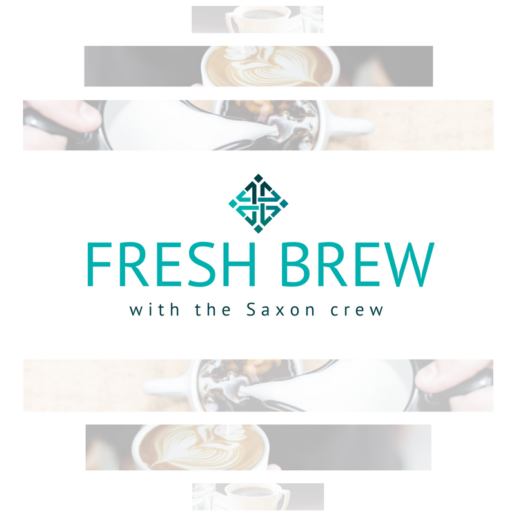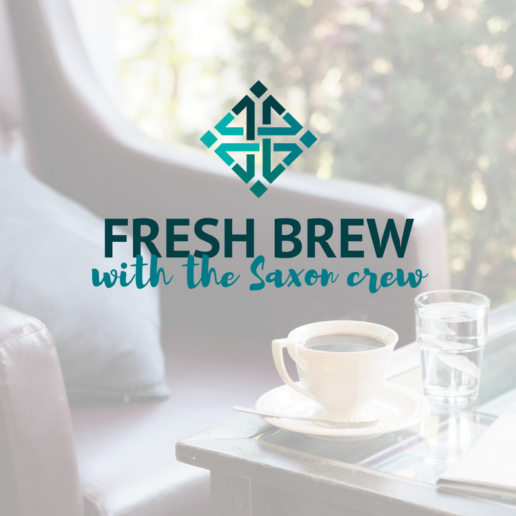The Saxon Advisor - March 2020
Compliance Check
what you need to know
Section 6055/6056 Reporting (Electronic Filing Deadline). Applicable large employers (ALEs) that sponsor self-insured health plans are required by Internal Revenue Code Sections 6055 and 6056 to report information about the coverage to the IRS yearly. IRS Forms 1094-C and 1095-C are used to report coverage information. March 31, 2020, is the deadline to submit these forms if employers are filing electronically.
COBRA General Notice. Employers who provide group health plans must provide a written General Notice of COBRA rights to all covered employees and spouses (if applicable). This notice must be provided 90 days after health plan coverage begins.
Summary Plan Description (SPD). Employers who offer group health plans that are subject to ERISA must provide Summary Plan Descriptions (SPD) to employees who newly enrolled at the beginning of the plan year by March 31, 2020.
Form 1099-R (Electronic Filing Deadline). Employers must file Form 1099-R with the IRS by March 31, 2020, if they are filed electronically.
Form 5330 Excise Tax Return. The Form 5330 excise tax return and payment for excess 2018 ADP/ACP contributions are due March 31, 2020.
Excess Contribution Refunds (over IRS limit). April 15, 2020 is the deadline to return excess retirement plan contributions for elective deferrals exceeding the 402(g) limits.
In this Issue
- Upcoming Compliance Deadlines
- Paving the Road to a Successful Portfolio Featuring Brian Bushman
- Upcoming Saxon U Webinar: Employee Navigator Workshop with Jake Meyer
- Fresh Brew Featuring Jake Meyer
- #CommunityStrong: American Heart Association Heart Mini Fundraising & School Donation Drive
Employee Navigator Workshop
Join us for this interactive and educational Saxon U webinar with Jake Meyer, Saxon Financial Services, as we walk you through certain aspects of Navigator and teach you how to use the most common features.
Paving the Road to a Successful Portfolio
Bringing the knowledge of our in-house advisors right to you...
Determining a proper asset allocation is an important first step in creating your portfolio and planning how it will grow in the future. Asset allocation is the process of diversifying your investments into different asset classes based on the investor’s time horizon, their goals and how much risk they can tolerate.
“People always ask me what they can invest in that will make them a lot of money without the chance of losing any,” said Brian Bushman, Saxon Financial Advisor.
Fresh Brew Featuring Jake Meyer
“Educate your employees about their benefits. The more they understand them, the more they will realize how big of a benefit they are.”
This month’s Fresh Brew features Jake Meyer, an Account Executive at Saxon.
Scott’s favorite brew is Rhinegeist Truth, a local Indian Pale Ale from the Rhinegeist Brewery in Cincinnati, Ohio.
Jake doesn’t have a particular snack that he eats when sipping on his favorite brew. He instead likes to enjoy the hops in his favorite IPA.
This Month's #CommunityStrong:
American Heart Association Heart Mini Fundraising
This March, the Saxon team and their families teamed up to raise money for the American Heart Association Heart Mini!
Do you have a strategic approach to the totality of your financial picture?
Saxon creates innovative strategies that will help you figure out how to get there, plan for the risks along the way, navigate complex tax code and understand the steps you need to take to protect and secure your future.
Monthly compliance alerts, educational articles and events
- courtesy of Saxon Financial Advisors.

The Saxon Advisor - February 2020
Compliance Check
what you need to know
Section 6055/6056 Reporting. Employers must file Forms 1094-B and 1095-B, and Forms 1094-C and 1095-C with the IRS by February 28, 2020 if they are filed on paper.
Form 1099-R Paper Filing. Employers must file Form 1099-R with the IRS by February 28, 2020 if they are filed on paper.
CMS Medicare Part D Disclosure. Employers that provide prescription drug coverage must disclose to the CMS whether the plan’s prescription drug coverage is creditable or non-creditable.
Summary of Material Modifications Distribution. Employers who offer a group health plan that is subject to ERISA must distribute a SMM for plan changes that were adopted at the beginning of the year that are material reductions in plan benefits or services.
Section 6055/6056 Individual Statements (2019 EXTENDED DEADLINE). Applicable large employers (ALEs) that sponsor self-insured health plans must disclose information about plan coverage to covered employees each year. This deadline was extended from January 31, 2020, to March 2, 2020, this year by the IRS.
ADP/ACP Refunds. Corrective refunds for a failed ADP/ACP test must be made by March 15, 2020, to avoid 10 percent excise tax penalties.
Section 6055/6056 Reporting (Electronic Filing Deadline). Applicable large employers (ALEs) that sponsor self-insured health plans are required by Internal Revenue Code Sections 6055 and 6056 to report information about the coverage to the IRS yearly. IRS Forms 1094-C and 1095-C are used to report coverage information. March 31, 2020, is the deadline to submit these forms if employers are filing electronically.
COBRA General Notice. Employers who provide group health plans must provide a written General Notice of COBRA rights to all covered employees and spouses (if applicable). This notice must be provided 90 days after health plan coverage begins.
Summary Plan Description (SPD). Employers who offer group health plans that are subject to ERISA must provide Summary Plan Descriptions (SPD) to employees who newly enrolled at the beginning of the plan year.
Form 1099-R (Electronic Filing Deadline). Employers must file Form 1099-R with the IRS by March 31, 2020, if they are filed electronically.
Form 5330. The Form 5330 excise tax return and payment for excess 2018 ADP/ACP contributions are due March 31, 2020.
In this Issue
- Upcoming Compliance Deadlines
- How to Speak to Your Employees About Their Intimidating Benefits – Featuring Jamie Charlton
- Fresh Brew Featuring Nat Gustafson
- This month’s Saxon U: What Employers Should Know About the SECURE Act
- March’s Saxon U: Saxon’s Humana GO365 Annual Wellness Clinic
- #CommunityStrong: American Heart Association Heart Mini Fundraising
What Employers Should Know About the SECURE Act
Join us for this interactive and educational Saxon U seminar with Todd Yawit, Director of Employer-Sponsored Retirement Plans at Saxon Financial Services, as we discuss what the SECURE Act is and how it impacts your employer-sponsored retirement plan.
How to Speak to Your Employees About Their Intimidating Benefits
Bringing the knowledge of our in-house advisors right to you...
Employers spend thousands annually to secure and offer benefits to their employees. However, a small amount of time and money are devoted to ensuring employees understand and appreciate their benefits. Properly communicating – what you say, how you say it and to whom you say it to – can make a tremendous difference in how employees think, feel and react to their benefits, employer and fellow co-workers.
In this installment of CenterStage, Jamie Charlton, founding partner and CEO of Saxon Financial Services, discusses the importance of offering sound education of benefits to employees, as well as how to effectively communicate their benefits in a clear, concise manner.
Fresh Brew Featuring Nat Gustafson
“Always be prepared.”
This month’s Fresh Brew features Nat Gustafson, an Account Manager at Saxon.
In his free time, Nat enjoys snowboarding. When thinking about his greatest adventure, he remembers traveling around Italy. He lives by the catchphrase of, “Roll up your sleeves.”
Nat’s favorite brew is Rhinegeist Truth. His favorite local spot to grab his favorite brew is Mount Lookout Tavern on Linwood Avenue.
Nat’s favorite snack to enjoy with his brew is Chicken wings.
This Month's #CommunityStrong:
American Heart Association Heart Mini Fundraising
This January, February & March, the Saxon team and their families will be teaming up to raise money for the American Heart Association Heart Mini!
Saxon’s Humana GO365 Annual Wellness Clinic
Learn what Go365 is, how it works, how to create engaged employees and how to maximize the 15% wellness incentive credit from the program.
Monthly compliance alerts, educational articles and events
- courtesy of Saxon Financial Advisors.

Fresh Brew with Nat Gustafson
Welcome to our monthly segment, Fresh Brew, where we will be exploring the delicious coffees, teas, and snacks of some of our employees! You can look forward to our Fresh Brew blog post on the first Friday of every month.
“Always be prepared.”
Nat Gustafson is an Account Manager at Saxon Financial.
Nat began his career at Total Quality Logistics. For four months, he learned to control himself in hectic situations and to better manage his time. Most importantly, he taught himself how to effectively communicate with others in difficult situations.
In his free time, Nat enjoys snowboarding. When thinking about his greatest adventure, he remembers traveling around Italy. He lives by the catchphrase of, “Roll up your sleeves.”


Rhinegeist Truth
Nat enjoys a Rhinegeist Truth, an indian pale ale, from his favorite local spot, Mount Lookout Tavern on Linwood Avenue.

Chicken Wings
Nat enjoys sipping on his favorite brew while eating chicken wings from Mount Lookout Tavern.
The Saxon Advisor - January 2020
Compliance Check
what you need to know
Form W-2s are due January 31, 2020. January 31 is the deadline for employers to distribute Form W-2s to employees. Large employers – employers who have more than 250 W-2s – must include the aggregate cost of health coverage.
Form 1099-Rs are due January 31, 2020. Employers must distribute Form 1099-Rs to recipients of 2019 distributions.
Form 945 Distributions. Form 945s must be distributed to plan participants by January 31, 2020, for 2019 non payroll withholding of deposits if they were not made on time and in full to pay all taxes that are due.
Section 6055/6056 Reporting. Employers must file Forms 1094-B and 1095-B, and Forms 1094-C and 1095-C with the IRS by February 28, 2020 if they are filed on paper.
Form 1099-R Paper Filing. Employers must file Form 1099-R with the IRS by February 28, 2020 if they are filed on paper.
CMS Medicare Part D Disclosure. Employers that provide prescription drug coverage must disclose to the CMS whether the plan’s prescription drug coverage is creditable or non-creditable.
Summary of Material Modifications Distribution. Employers who offer a group health plan that is subject to ERISA must distribute a SMM for plan changes that were adopted at the beginning of the year that are material reductions in plan benefits or services
In this Issue
- Upcoming Compliance Deadlines
- Traditional IRA, Roth IRA, 401(k), 403(b): What’s the Difference?
- Fresh Brew Featuring Scott Langhorne
- This month’s Saxon U: What Employers Should Know About the SECURE Act
- #CommunityStrong: American Heart Association Heart Mini Fundraising
What Employers Should Know About the SECURE Act
Join us for this interactive and educational Saxon U seminar with Todd Yawit, Director of Employer-Sponsored Retirement Plans at Saxon Financial Services, as we discuss what the SECURE Act is and how it impacts your employer-sponsored retirement plan.
Traditional IRA, Roth IRA, 401(k), 403(b): What's the Difference?
Bringing the knowledge of our in-house advisors right to you...
If you haven’t begun saving for retirement yet, don’t be discouraged. Whether you begin through an employer sponsored plan like a 401(k) or 403(b) or you begin a Traditional or Roth IRA that will allow you to grow earnings from investments through tax deferral, it is never too late or too early to begin planning.
“A major trend we see is that if people don’t have an advisor to meet with, they tend to invest too conservatively, because they are afraid of making a mistake,” said Kevin Hagerty, a Financial Advisor at Saxon Financial.
Fresh Brew Featuring Scott Langhorne
“Pay close attention to detail.”
This month’s Fresh Brew features Scott Langhorne, an Account Manager at Saxon.
Scott’s favorite brew is Bud Light. His favorite local spot to grab his favorite brew is wherever his friends and family are.
Scott’s favorite snack to enjoy with his brew is wings.
This Month's #CommunityStrong:
American Heart Association Heart Mini Fundraising
This January, February & March, the Saxon team and their families will be teaming up to raise money for the American Heart Association Heart Mini! They will be hosting a Happy Hour at Fretboard Brewing Company Wednesday, January 29, from 4 p.m. - 7 p.m. to raise money.
Are you prepared for retirement?
Saxon creates strategies that are built around you and your vision for the future. The key is to take the first step of reaching out to a professional and then let us guide you along the path to a confident future.
Monthly compliance alerts, educational articles and events
- courtesy of Saxon Financial Advisors.

Fresh Brew with Scott Langhorne
Welcome to Fresh Brew, where we explore the delicious coffees, teas, and snacks of some of our employees! You can look forward to our Fresh Brew blog post on the first Friday of every month.
“Pay close attention to detail.”
Scott Langhorne is an Account Manager at Saxon.
Scott joined the team at Saxon Financial Services after working in customer service. His favorite catchphrase, a quote from the movie Friday Night Lights, is, “Clear eyes, full heart, can’t lose.”
Scott enjoys helping out his family and friends with any projects they need doing. He also enjoys traveling with his wife. His most memorable trip was when they traveled to Switzerland and Portugal.
In his free time, Scott enjoys playing golf during the warmer months. He also enjoys spending time with his wife and their dog, Bosley.


Bud Light
Scott enjoys drinking Bud Light. His favorite local spot to grab is favorite brew is wherever friends and family are.

Wings
Scott’s favorite snack to accompany his favorite brew are wings.
Traditional IRA, Roth IRA, 401(k), 403(b): What's the Difference?
The earlier you begin planning for retirement, the better off you will be. However, the problem is that most people don’t know how to get started or which plan is the best vehicle to get you there.
A good retirement plan usually involves more than one type of investment account for your retirement funds. This may include both an IRA and a 401(k), allowing you to maximize your planning efforts.
If you haven’t begun saving for retirement yet, don’t be discouraged. Whether you begin through an employer sponsored plan like a 401(k) or 403(b) or you begin a Traditional or Roth IRA that will allow you to grow earnings from investments through tax deferral, it is never too late or too early to begin planning.

This article discusses the four main retirement savings accounts, the differences between them and how Saxon can help you grow your nest egg.
“A major trend we see is that if people don’t have an advisor to meet with, they tend to invest too conservatively, because they are afraid of making a mistake,” said Kevin Hagerty, a Financial Advisor at Saxon Financial.
“Then the problem is they don’t revisit it, and if you’re not taking on enough risk you’re not giving yourself enough opportunity for growth. You run the risk that your nest egg might not grow to what it should be.”
“Saxon is here to help people make the best decision on how to invest based upon their risk tolerance. We have methods to determine an individual’s risk factors, whether it be conservative, moderate or aggressive, and we make sure to revisit these things on an ongoing basis.”
Traditional IRA vs. Roth IRA
Who offers the plans?
Both Traditional and Roth IRAs are offered through credit unions, banks, brokerage and mutual fund companies. These plans offer endless options to invest, including individual stock, mutual funds, etc.
Eligibility
Anyone with Earned, W-2 Income from an employer can contribute to Traditional or Roth IRAs, as long as you do not exceed the maximum contribution limits. However, only qualified distributions from a Roth IRA are tax-free.
In order to be able to contribute to a Roth IRA, you must have taxable income and your modified adjusted gross income is either:
- less than $194,000 if you are married filing jointly
- less than $122,000 if you are single or head of household
- less than $10,000 if you’re married filing separately and you lived with your spouse at any time during the previous year.
Tax Treatment
With a Traditional IRA, typically contributions are fully tax-deductible and grow tax deferred. So when you take the money out at retirement, it is taxable. With a Roth IRA, the contributions are not tax deductible but grow tax deferred. So when the money is taken out at retirement, it will be tax free.
“The trouble is nobody knows where tax brackets are going to be down the road in retirement. Nobody can predict with any kind of certainty because they change,” explained Kevin. “That’s why I’m a big fan of a Roth.”
A Roth IRA can be a win-win situation from a tax standpoint. Whether the tax brackets are high or low when you retire, it doesn’t matter. Your money will be tax free when you withdraw it. Another advantage is, at 70 ½, you are not required to start taking money out. “We’ve seen Roth IRAs used as an Estate planning tool, and they’ll be able to take that money out tax free. It’s an immense gift,” Kevin said.
Maximum Contribution Limits
Contribution limits between the Traditional and Roth IRAs are the same; the maximum contribution is $6,000, or $7,000 for participants 50 and older.However, if your earned income is less than $6,000 in a year, say $4,000, that is all you would be eligible to contribute.
“People always tell me, ‘Wow, $6,000, I wish I could do that. I can only do $2,000.’ Great, do $2,000,” said Kevin. “I always tell people to do what they can and then keep revisiting it and contributing more when you can. If you increase a little each year, you will be contributing $6,000 eventually and not even notice.”
Withdrawal Rules
With a Traditional IRA, withdrawals can begin at age 59 ½ without a 10% early withdrawal penalty but still with Federal and State taxes. The IRS will mandate that you begin withdrawing at age 70 ½.
Even though most withdrawals are scheduled for after the age of 59 ½, a Roth IRA has no required minimum distribution age and will allow you to withdraw contributions at any time. For example, if you have contributed $15,000 to a Roth IRA, but the actual value of it is $20,000 due to growth, then the contributed $15,000 could be withdrawn with no penalty, any time – even before age 59 ½.
Employer Related Plans – 401(k) & 403(b)
A 401(k) and a 403(b) are theoretically the same thing; they share a lot of similar characteristics with a Traditional IRA as well.
Typically, with these plans, employers match employee contributions, such as .50 on the dollar up to 6%. The key to this is to make sure you are contributing anything you can to receive a full employer match.
Who offers the plans?
One of the key differences with these two plans lies in whether the employer is a for-profit or non-profit entity.

These plans will have a number of options of where to invest, often a collection of investment options selected by the employer.
Eligibility
401(k)’s and 403(b)’s are open to all employees of the company for as long as they are employed there. If an employee leaves the company they are no longer eligible for these plans since 401(k) or 403(b) contributions can only be made through pay roll deductions. However, you can roll it over into an IRA and then continue to contribute on your own.
Only if you take possession of these funds would you pay taxes on them. If you have a check sent to you and deposit it into your checking account – you don’t want to do that.
Then they take out federal and state taxes and tack on a 10% early withdrawal penalty if you are not age 59 ½. It can be beneficial to roll a 401(k) or 403(b) left behind at a previous employer over to an IRA so it is in your control, and you have increased investment options.
Tax Treatment
Contributions are made into your account on a pretax basis through payroll deduction.
Maximum Contribution Limits
The maximum contribution is $19,500, or $26,000 for participants 50 and older.
Depending on the employer, some 401(k) and 403(b) plans provide loan privileges, providing the employee the ability to borrow money from the employer without being penalized.
Withdrawal Rules
In most instances, comparable to a Traditional IRA, withdrawals can begin at age 59 ½ without a 10% early withdrawal penalty. The IRS will mandate that you begin withdrawing at age 70 ½. Contributions and earnings from these accounts will be taxable as ordinary income. There are certain circumstances when one can have penalty free withdrawals at age 55, check with your financial or tax advisor.
In Conclusion…
“It is important to make sure you are contributing to any employer sponsored plan available to you, so you are receiving the full employer match. If you have extra money in your budget and are looking to save additional money towards retirement, that’s where I would look at beginning a Roth IRA. Then you can say you are deriving the benefits of both plans – contributing some money on a pretax basis, lowering federal and state taxes right now, getting the full employer contribution match and then saving some money additionally in a Roth that can provide tax free funds/distributions down the road,” finished Kevin.
To learn more, contact Kevin Hagerty today at (513) 333-3886 or via email at khagerty@gosaxon.com.
Bringing the knowledge of our in-house advisors right to you...
4 End-of-Life Documents and Why You Need Them?
While the majority of people would prefer not to think about the end of life, it is important to discuss the need for and understanding of end-of-life planning documents. What are these documents and why do you need them? Read this blog post to learn more.
Most of us aren’t keen to think about the end of life–especially our own. But discussing the need for and understanding end-of-life planning documents is important for all of us. So, what are these documents and why do you need them? Here’s a summary:
1: Durable power of attorney. This appoints another person to transact business, legal and financial matters for you until you die.
Why do you need it? Let's say you are incapacitated by an accident or illness, it allows the person you’ve chosen to act for you—and quickly. That can help you avoid a lot of problems, including hard-to-get guardianship and conservatorship rights. (If you are unsure of what either of these two terms means, this article makes it clear.)
2: Appoint a health-care representative. As with the first document, this allows someone to act on your behalf to make health-care decisions if you’re unable. It allows them to review health records, authorize admission to or discharge you from a hospital and make decisions about life-sustaining medical procedures.
Why do you need it? You’ll have peace of mind knowing that your wishes will be fulfilled as you intended, especially when it comes to life-sustaining medical procedures. It also helps avoid family arguments about who should have the final say.
3: Advance care directives or living will. This puts in writing the decisions you have made about your health care—instructions, if you will, for your doctor—so that your wishes are followed if you are unable to articulate them.
Why do you need it? It ensures, for example, that you receive the treatment you’ve decided on beforehand if you are terminally ill or permanently unconscious. It helps make sure that the treatments you receive in a terminal or permanently unconscious situation are in keeping with your wishes and provides guidance to your health-care representative.
4: A will or revocable living trust. This puts in writing who will inherit your assets when you die, and in what manner. These two documents can help eliminate, avoid or postpone taxes that are payable when you die. An attorney can help you decide which of these documents is better for you.
Why do you need these? If you do not have a will or a revocable living trust, basically the government will be able to decide how and to whom your assets are distributed, and it may not be to those you intended.
These legal documents require the guidance of a qualified legal advisor to ensure they meet the requirements of your state of residency, and if you already have these but have moved to a new state, they should be reviewed to ensure they comply with the laws of your state.
SOURCE: Feldman, M. (10 December 2019) "4 End-of-Life Documents and Why You Need Them?" (Web Blog Post). Retrieved from https://lifehappens.org/blog/4-end-of-life-documents-and-why-you-need-them/
Wacky interview questions may help employers hire the best workers
More and more employers are asking unconventional interview questions in efforts to get to know candidates better. While traditional interview questions are a great way to open an interview, unconventional questions help a hiring manager dig deeper. Read this article for more on how unconventional questions may help hire the best workers.
The job prospect has aced all the standard interview questions, but off-the-wall questions may be the best trick employers can use to glean insight into how a hot prospect thinks.
Imagine that a candidate has skillfully answered what his top strengths and some weaknesses are. Now consider asking: "Would you rather fight one horse-sized duck, or 100 duck-sized horses?" Or, what would that candidate do if she found a penguin in the freezer? Could she guess how many basketballs would fit inside the interview room?
While traditional interview questions are a great way of opening the interview and making a candidate feel comfortable, unconventional questions can move the interview beyond a rote Q&A session to an authentic conversation that can help a hiring manager learn more about a candidate.
These questions may sound like they are from some wacky game show. But they are real interview questions being asked by today’s employers. These questions aim to dig deeper and get to know the candidates better.
These questions are intended to surface information related to a candidate’s ability to problem-solve and understanding their motivations. Unusual job interview questions typically don’t have any right or wrong answers. These questions are an opportunity for candidates to demonstrate that they can think fast on their feet, show poise under stress, think outside the box, and reveal more of their personality.
This can also be a great way to assess culture fit. A question that asks a candidate “if they could be any animal, what would it be and why?” can provide insight into a job seeker’s personality and thought process. Understanding these attributes is key to determining whether or not a candidate would mesh well with company culture.
Unconventional questions don’t have to be completely off the wall. Instead of asking a candidate about their greatest weakness, hiring managers should consider asking things like, “what did you learn about yourself in your previous role?” and “what challenges did you face in this role and how did you overcome them?” Answers to these questions provide the hiring manager with visibility into how a candidate learns from different situations, as well as their ability to problem-solve.
Enhancing candidate experience is another good reason to ask unusual interview questions. Repeating the same questions through several rounds of interviews is not only tedious for the candidate, but it does not reflect well on the employer brand. Changing questions up will make the process more engaging and valuable for both the candidate and the hiring manager.
An unconventional approach to interview questions should not be overused nor should these types of questions be asked for the sole purpose of throwing a candidate off guard. Each question should be aimed at gaining a clear understanding of a candidate’s work style, values and motivations to determine if they are a good organizational fit.
While interview questions like "how would you sell hot cocoa in Florida?" or “if you were on an island and could only bring three things, what would you bring?” are certainly unconventional, hiring managers are now using this approach to elicit natural, unrehearsed responses that reveal more about candidates from how they think and how they react under stress, to their personality and what motivates them. Digging deeper and getting to know candidates with unconventional interview questions provides valuable insights that can help hiring managers make the best hires for their organization.
SOURCE: Blanco, M. (13 December 2019) "Wacky interview questions may help employers hire the best workers" (Web Blog Post). Retrieved from https://www.benefitnews.com/opinion/wacky-interview-questions-may-help-employers-hire-the-best-workers
9 things HR needs to know to curb bullying at work
Bullying doesn't stop after middle school, high school or college. A national survey by the Workplace Bullying Institute found that 19 percent of employees are bullied. Read this blog post to learn more about bullying in the workplace.
When people think of bullying, they may envision the stereotypical middle school setting, where a mild-mannered teen is shoved into a locker, ostracized or, nowadays, trolled on social media. But bullying doesn't stop after middle school; it continues into adulthood and shows up in the workplace on a disturbingly frequent basis.
According to the Workplace Bullying Institute's (WBI) 2017 National Survey, 19% of U.S. employees are bullied, and another 19% witness it. All told, the survey says that 60.3 million Americans are affected by this behavior in the workplace.
WBI's definition of workplace bullying is "repeated, health-harming mistreatment of one or more persons by one or more perpetrators." It includes threats, humiliation, intimidation, work sabotage and verbal abuse, WBI Director Gary Namie told HR Dive.
Not illegal — just expensive
Bullying and harassment share similar traits of severe or pervasive and unwelcome conduct that creates a hostile work environment. Although harassment is against the law, bullying is not, Heather Becker, partner at Laner Muchin, told HR Dive in an email. "The difference would be that bullying can happen to anyone for any reason. Technically, unlawful harassment is conduct that occurs because of an individual's protected characteristic, such as gender, race, national origin," she said. Bills that would prohibit workplace bullying have been introduced in at least 30 states but none have been made law.
But even if bullying is not unlawful, it comes with a cost. Individuals who are the targets of repeated abusive behaviors can begin to have physical and psychological issues related to high anxiety, depression and stress, Kim Shambrook, vice president, Safety Education, Training and Services for the National Safety Council, told HR Dive.
"As we as a country and society look at total wellness, it's definitely becoming a big issue. People who experience stress at work have other symptoms. They can't sleep; don't want to go to work. There are all sorts of residual effects," she said.
Those effects can impact the employer, she explained. Whether an employee is directly affected or even affected as a witness, the damage can decrease workplace safety and employee morale and increase absenteeism and turnover, Shambrook said.
What HR needs to know
1. Bullying is complicated — even for the aggressor
There's a continuum of abrasive behavior, Linda Beitz, owner of Solutions Through Dialogue, told HR Dive. At one end of the spectrum are people who are slightly annoying but don't cause stress to others. At the far end of the continuum are the rare people with aberrant behavior. Most issues are found in people in the middle of the spectrum, who cause organizational stress to co-workers, sufficient to interrupt organizational functioning, she said.
"They're people who have a desire to achieve results and think that they are motivating people, utilizing abrasive behaviors," Beitz said. She suggested using people-first language of a "human being with abrasive behaviors" instead of the word "bully," which perpetuates labeling and name-calling. But that doesn't mean the behaviors should be tolerated, she added.
2. A bullying situation says more about the organization than it does the individuals
Certain company cultures are ripe for bullying, Namie said. "It's the establishment of a competitive environment, but not healthy competition, where you could end up with a win-win. We set up a zero-sum competitive world. [For example,] 'I must obliterate you in order for me to enjoy success,'" he explained. In this winner-takes-all scenario, the majority who don't win are demoralized while the single individual is artificially pumped up, he said.
3. A lack of consequences reinforces bullying
When the bully also is a valued employee, there is a systematic, historical problem of organizational leaders failing to address behavior, mainly out of fear and conflict avoidance, Namie said. When a person with aggressive behavior is promoted and praised, neither they nor the organization demonstrates concern for the wellbeing of the other employees, he said.
4. HR cannot stop bullying
This change must come from the top. HR can ensure policies and procedures are established and communicated, but consistently implementing the policies, regardless of the employees involved, requires action from senior leadership, Namie said. HR, for its part, can try to convince senior leaders that the financial cost of bullying — from payouts, absenteeism, presenteeism, health issues, medical expenses, workers' compensation, safety, turnover and productivity — are not worth ignoring abusive behavior.
5. Any reports of bullying — no matter how seemingly minor, must be investigated
Don't turn a blind eye, Shambrook said. "Any report of bullying should be taken seriously." This includes conducting a thorough investigation. "If someone is found to be engaging [in aggressive behavior], there has to be a consequence, and it has to be spelled out in the policy."
6. Everyone needs training to recognize and address bullying
Front-line supervisors, senior leaders and the employee population need to know what to do when they experience or witness bullying. Leaders need to be trained in emotional intelligence, Beitz said; encourage people to speak up to create a healthier organization, Shambrook added, and ensure employees know where to turn to do so.
7. Improvement is possible
Abrasive employees who are motivated to change can develop new skills, Beitz said. If they are open to feedback and the recognition that their behavior isn't useful — and that there are negative consequences for continuing that behavior — they may be willing to learn new methods. "It's a four-step process: First, waking them up to how they are showing up as a leader or manager. Second, helping them to see the impact that their behavior is having on others. Third, equipping them with an understanding of what might be driving their behavior, and developing their capacity to accurately read the emotions that others are feeling as a result of their actions. And, fourth, helping them to develop new strategies to get the results they are looking for without causing distress in co-workers and the organization," she said.
8. Targets need support
Unfortunately, most people who are targeted (65%, according to WBI) lose their jobs through no fault of their own, Namie said. They might be fired, reassigned or (somewhat) voluntarily resign. Providing support for the person targeted is critical, Shambrook added. It is vital to encourage the person to use available employee assistance programs, keep them updated on progress, let them know when the issue is resolved and check on them afterward.
9. The "eggshell skull" rule applies
Do not ignore a complaint under the assumption that an employee is overly sensitive. Even if abusive behavior damages one person but not others, the organization is still responsible for that individual who is affected. The eggshell skull rule says that damages aren't any less because one person may be more susceptible to injury.
Workplace bullying can be entrenched in a culture, and it takes a full-scale approach to stop it, but ignoring or minimizing the behaviors or delaying consequences is detrimental to everyone in the organization.
"You don't pay attention to it until it touches your life," Namie said, "but we can't wait until everyone has been personally bullied in order to make it stop."
SOURCE: DeLoatch, P. (7 October 2019) "9 things HR needs to know to curb bullying at work" (Web Blog Post). Retrieved from https://www.hrdive.com/news/9-things-hr-needs-to-know-to-curb-bullying-at-work/563639/
DOL updates FLSA regular rate rule
With the New Year right around the corner, it's important to know what rules are being updated. The U.S. Department of Labor has updated the "regular rate of pay" to calculate overtime pay. This standard is used to calculate overtime pay under the Fair Labor Standards Act (FLSA). Read this blog post for more information on this final rule.
The U.S. Department of Labor (DOL) has issued a final rule updating the "regular rate of pay" standard used to calculate overtime pay under the Fair Labor Standards Act (FLSA), according to a notice to be published in the Federal Register Dec. 13.
In the rule, DOL clarifies when certain employer benefits may be excluded when calculating overtime pay for a non-exempt employee, including bona fide meal periods, reimbursements, certain benefit plan contributions, state and local scheduling law payments and more. The rule also clarifies how employers may determine whether a bonus is discretionary or nondiscretionary.
The rule will take effect Jan. 12, 2020.
The rule will likely result in employers taking a closer look at their benefits packages, Susan Harthill, partner at Morgan Lewis, told HR Dive in an emailed statement.
A number of employer advocates that submitted comments on DOL’s Notice of Proposed Rulemaking (NPRM), including the Society for Human Resource Management, supported excluding employee benefits like gym memberships, tuition assistance and adoption and surrogacy services from regular rate calculations. Gym memberships and tuition assistance are generally excludable, according to DOL, but the agency said only some forms of adoption assistance would be excludable and that most surrogacy assistance payments would not be.
Employers also inquired about public transportation and childcare subsidies. In the final rule, DOL said public transportation benefits would not be excludable, noting that the agency "has long acknowledged that employer-provided parking spaces are excludable from the regular rate but commuter subsidies are not." But it did add clarifying language around childcare, saying that while "routinely-provided childcare" must be included in the regular rate, emergency childcare services — if those services are not provided as compensation for hours of employment and are not tied to the quantity or quality of work performed — may be excluded.
DOL also offered additional details about its treatment of tuition reimbursement and education-related benefits. As it stated in the NPRM, the agency said that as long as tuition programs are offered to employees regardless of hours worked or services rendered are "contingent merely on one’s being an employee," such programs qualify as "other similar payments" excludable from the regular rate. This includes payment for an employee's current coursework, online coursework, payment for an employee’s family member’s tuition and certain student-loan repayment plans, DOL said.
HR teams should respond by performing audits of the pay codes for benefits that would be impacted, Tammy McCutchen, shareholder at Littler Mendelson, told HR Dive in an interview: "This is a good time to get your calculations correct." McCutchen suggested that employers conduct audits first before deciding whether to expand benefits options in light of the rule. She added that it's an employer's responsibility to notify payroll providers of any changes to exemptions.
Employers also will need to check state laws and consult with counsel ahead of implementing changes to employees' regular rates, as those laws may differ from DOL's new rule, Harthill said. Moreover, "[t]his is an interpretive rule and it remains to be seen whether courts will defer to DOL's interpretation of the rule or if any resultant exclusions are challenged," she added.
SOURCE: Golden, R. (12 December 2019) "DOL updates FLSA regular rate rule" (Web Blog Post). Retrieved from https://www.hrdive.com/news/dol-updates-flsa-regular-rate-rule/568954/













